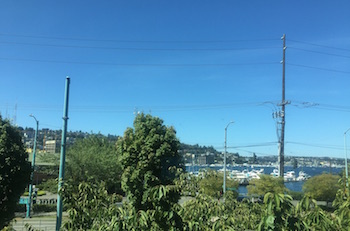This has been a busy, but fun and productive, summer. Lots of things going on. I had a couple conferences, traveled to Brazil in June to help with Zika sequencing and traveled to South Korea for a collaborative visit. In addition to lab things, I’ve been working with Charlton Callender, Richard Neher and Colin Megill on the nextstrain project, trying to get all the pieces of the pipeline together. We’re basically doing a full refactor from the existing nextflu codebase to include a database to manage sequence and serological data, improved build pipelines and more flexible visualization tools. I’ll try to write more on the nextstrain project at a later date. We’re trying to have a prototype ready by Dec 1 when Open Science Prize judging will be held.
Lots of activity in the lab:
-
Alvason Li designed some really nice analyses to track T cell dynamics using TCR repertoire data in collaborative project with Jia Zhu. We’re writing this up now for publication, but some of the analyses can be seen here. In July, Alvason departed for a postdoc in the Corey Lab to focus more on TCR repertoire analysis.
-
Gytis Dudas is finishing up a massive phylogeographic analysis of Ebola spread in West Africa. A few public results are here.
-
Allison Black passed her Epi quals (yay!) and is now thinking towards dissertation projects. We’re trying to get some in-house sequencing capabilities set up. Super exciting.
-
Sidney Bell is finishing up a project on lentiviruses and cross-species transmission. Working on lentiviruses phylogenetics proved rather difficult (deep phylogenies with lots of recombination), but Sidney did splendidly. Sidney will be pursuing a PhD in the lab, jointly advised by Michael Emerman.
-
Charlton Callender did an amazing job in building the database fauna, which is now capable of handling sequence and serological data for flu, Zika and Ebola. This deserves a blog post of its own at some point. In September, Charlton will be starting a Post-Bachelor Fellowship at the Institute for Health Metrics and Evaluation at the UW. Sad to losing him, but excited to see what he’ll accomplish at IHME.
-
Stephanie Stacy spent the summer with the lab at part of the Undergraduate Internship Program. She did a fantastic job developing a statistical method to estimate missed infections in a phylogenetic tree. We imagine this could be useful for outbreak response. Steph won the award for best poster presentation at the SURP Poster Session.
-
Eden Berga and Natalie Boesen spent the summer with the lab through the High School Internship Program. In the internship, Natalie and Eden learned how to program in program in Python and run phylogeographic analyses. They’ve both done impressive work and their resulting write-ups have been posted to GitHub for Eden’s project on yellow fever and Natalie’s project on chikungunya.
I’m looking forward to the coming year. We have lots of momentum at this point and it will be fun to see the science that’s produced.
